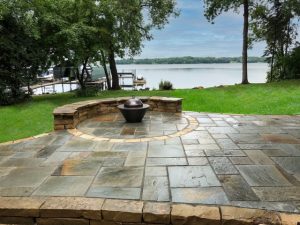Believe it or not, but it is not just metal that can corrode. Soil erosion can cause serious problems for your home garden, so steps must be taken to control it. When water flows across the ground, it can damage the soil. The faster the flow, and the more exposed the soil, the more damage it can cause. To help prevent these problems, you can cover or plant the slope to help minimize erosion.
One handy way to prevent water from flowing too fast is to construct terraces. Terraces will help break up the water and slow it down. Terraces are especially useful in places where it is difficult to grow gardens because of the terrain or the landscape. Terraces will help you create mini gardens that can be more flexible and hearty.
Terraces
Essentially, the key to preventing erosion is to turn one long slope into several more level slops. Rain will then absorb into the soil as opposed to running off into the sewer system, dragging soil along with it. Terraces can be treated like landings on the slope. You can cut out spots on the slopes to put in a terrace, and make sure that they are more level. They do not have to be completely level. 2% perpendicular will work just fine to create a more gently grade for drainage.
Spacing
Proper spacing is vital for ensuring an appropriate run off to prevent erosion. However, the spacing will vary depending on the type of slope. In general, shorter slopes create less of an opportunity for runoff, and thus, erosion. Terracing works best when you can split the slope into smaller segments with little chance of a fast moving flow. It is also helpful if you can install drainage pipes below the soil to capture extra runoff and redirect it. It should be perforated on the underside so that the water goes into the gravel bed underneath it.
Terrace Construction
Gravity is always working, so water will also naturally flow downhill. When you are installing and constructing terraces, make sure to make a retaining wall on the exposed side. The flowing water could push the wall outward and damage the wall, so make sure it is sturdy. You may want to consult a professional for help with this. In climates where there is freezing and thawing throughout the year, this is especially important. Make sure you also consult with local building codes to make sure that your retaining walls are in compliance.
Retaining Walls
Retaining walls do help slow runoff, but their main purpose is to hold the terrace and the embankment together against the pressure of the water. With terraces, the ground must be close to level. If you are just using retaining walls, then the ground does not have to be. The materials that you use for a retaining wall have to be sturdy enough to handle the pressure of the water and soil pushing up against it. However, it has be be porous so that it can adequately drain the water. It is usually suggested that drainage pipes should be installed about 24 inches apart, and 6 inches off the ground.
Soil erosion can have serious consequences for any garden. The topsoil is the most fertile part of the soil, and is vital for proper growth. Water runoff is the main cause of soil erosion, so you must take steps to prevent water from flowing too quickly throughout your garden. If you have a slope to your yard, it can be very difficult to manage. Terraces and retaining walls can help you slow down the water and keep your soil fertile for your plants.

